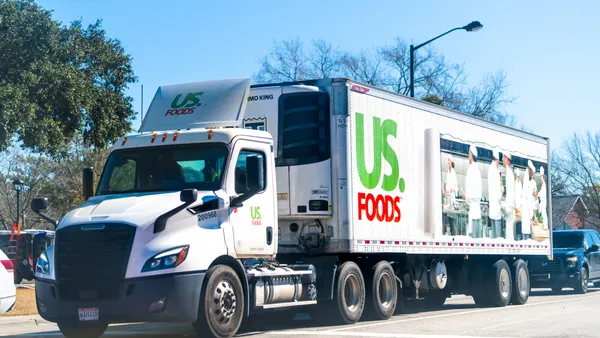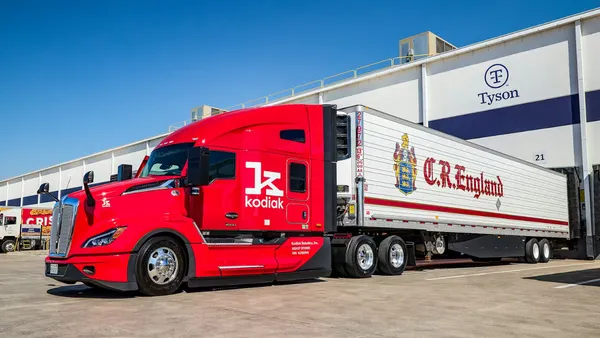Dive Brief:
- Some spot market volumes saw notable increases after Hurricane Ian swept through Florida, DAT reported Oct. 4.
- Inbound volume in Southeast freight staging markets in Florida and Georgia increased 20% week over week, the analytics and forecasting firm said.
- DAT further projected that demand pressures were just beginning. “We can expect considerable market instability in the coming weeks,” wrote Dean Croke, the firm’s principal analyst.
Dive Insight:
Capacity was already tightening ahead of the deadly storm, reversing volume declines across southeastern cities from the previous month, DAT analysts noted.
“You’re definitely seeing regional impacts of Hurricane Ian,” DAT Chief of Analytics Ken Adamo said Oct. 11 during a weekly market update.
The surge in demand is typical with other weather patterns constraining service. But unlike Hurricane Harvey in 2017, the spot market has recently been loosening instead of tightening, meaning there’s more ability to withstand these kinds of shocks, FTR Transportation Intelligence Vice President of Trucking Avery Vise told Transport Dive.
The effects of a storm often pushes carriers to make the tough decision whether to transport freight ahead of delays, staffing challenges and possible fuel or parking issues, according to DAT.
“Posting activity tends to increase after any big storm,” Croke said in the email, noting that it also can be difficult for truckers to find a profitable load out.
But other indicators suggest the hurricane was not the only factor in the Southeast market's spot rate surge. Vise said the Midwest saw a similar jump in freight volume recently. Meanwhile, Croke said the end of the quarter may have led some shippers to move more freight off their docks to record a sale or reduce inventory during the financial reporting period.
"Activity tends to fall off the following week," Croke said.
Nevertheless, inbound rates from Atlanta to Florida communities struck by the storm were significantly higher than September averages.
The most "discernible impact" in rates may have been in reefer capacity. For Oct. 1 to 7, reefer rates saw an 8.3% increase in the Southeast, compared to the previous week, Vise said.
Earlier this month, DAT projected demand to remain elevated or even increase, stating that carriers will likely adjust inbound rates based on market circumstances.










